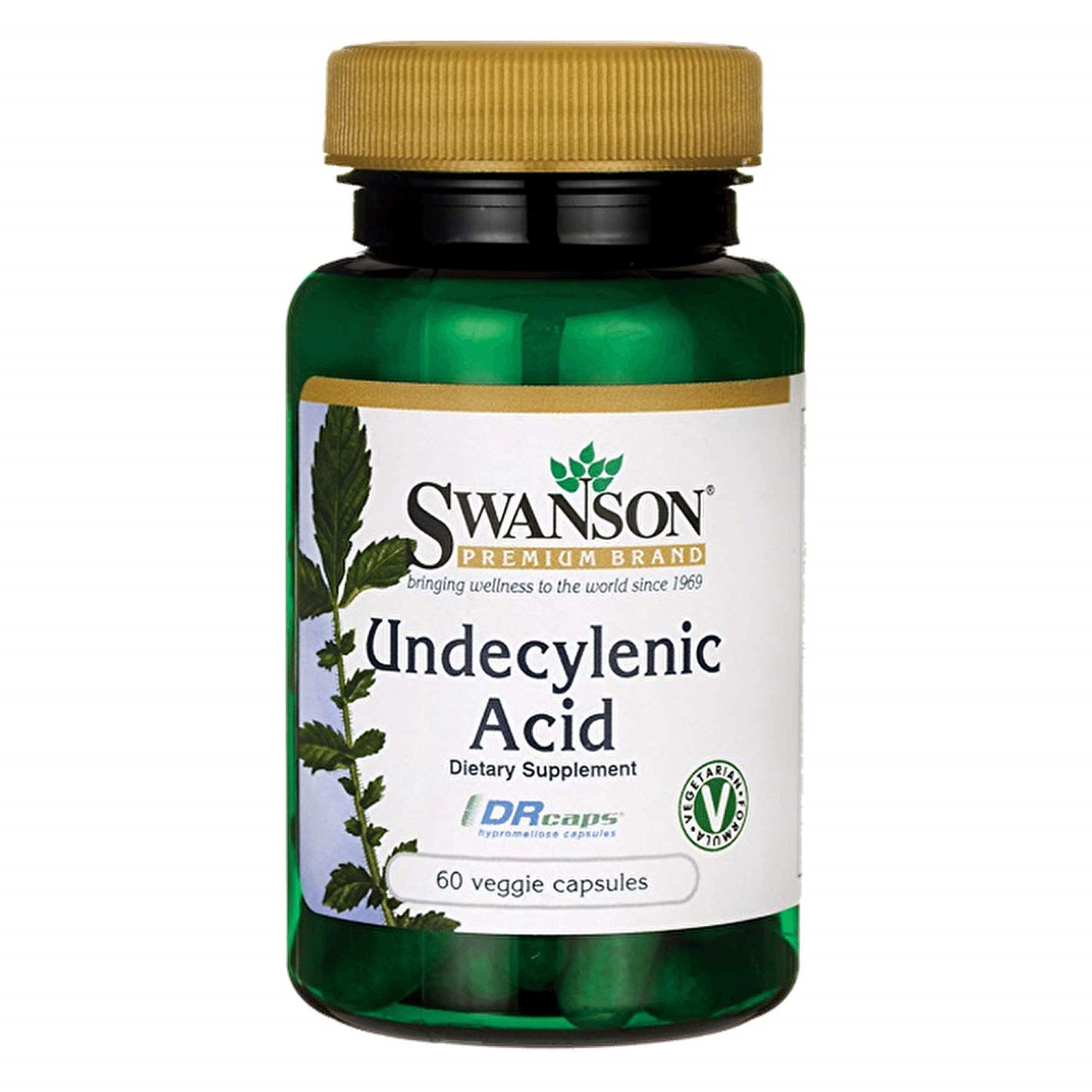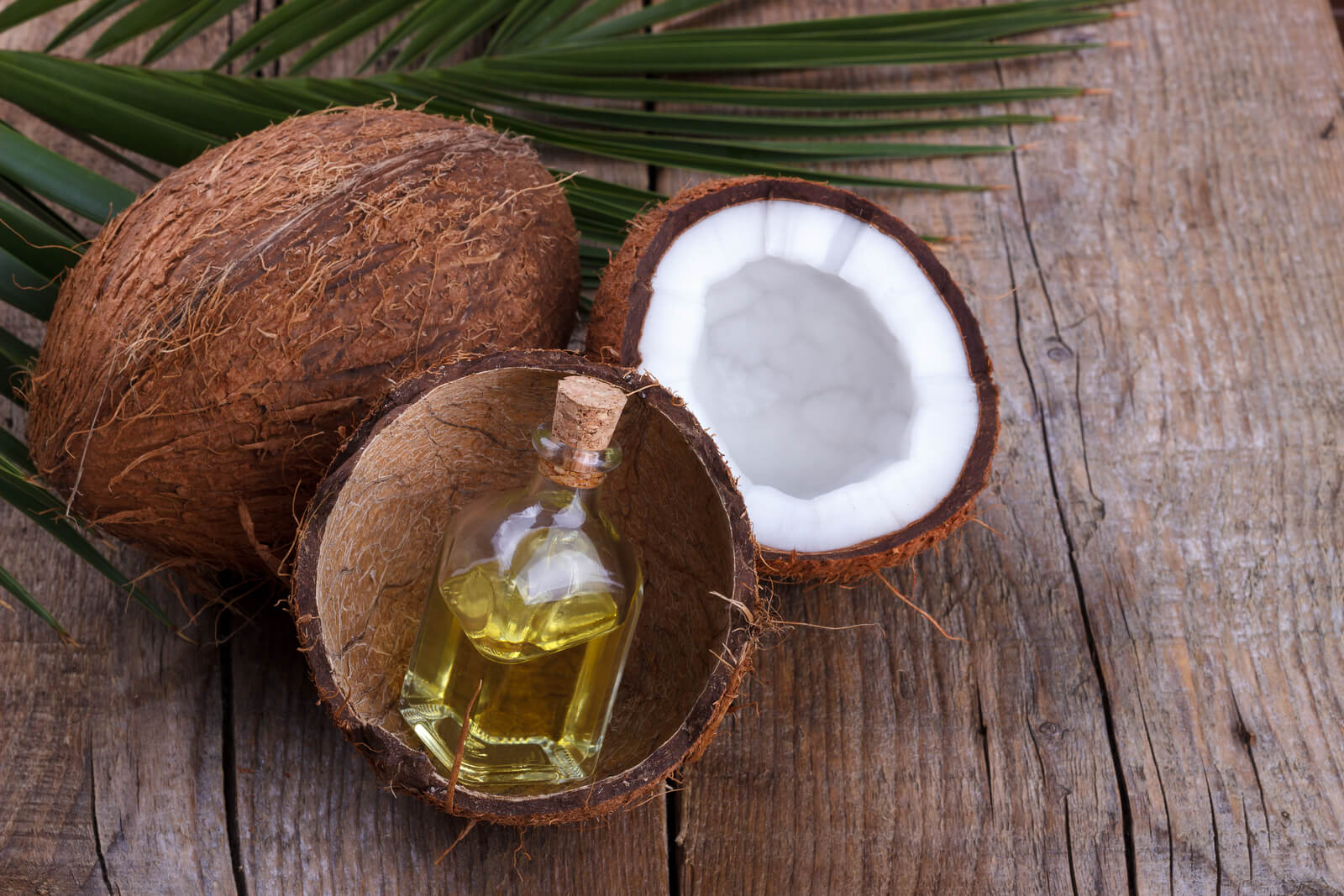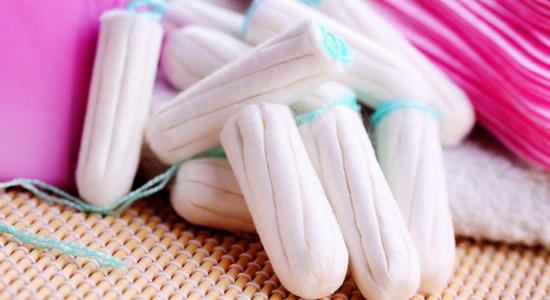See all "Coconut Oil" Section Topics

Undecylenic acid for Candida infections is an effective cure you can employ. This fatty acid has the capabilities of slowing down Candida growth, and interferes with other things Candida does, to maintain its grip on a person. Typically, undecylenic acid has been traditionally used to treat various forms of fungal infections. It is relatively safe, and you can use it along with other fatty acids, to perhaps increase your remedy’s healing efficacy! You might want to include it with coconut oil to help give yeast a more powerful blow where you're having an infection.
Although generally safe, too much undecylenic acid can cause irritation to the skin as a side effect. If you want to see how you will react to it, you can try putting a small amount on your skin and see how your skin reacts.
Candida & Undecylenic Acid Research

Hyphal growth, the transformation from a single celled yeast into a long germ tube, has been shown to greatly contribute to the virulence of Candida. Some types of Candida are not dimorphic; i.e., exist in two different physiological forms. Yet, Candida albicans, the yeast responsible for about 80% of all cases of Candidiasis, does develop hyphal germ tubes (Fidel, et al., 1999). Consequently, this hyphal transition Candida albicans can go through, is of importance—as so many infections are a result of this one, particularly virulent, species. Some rare mutants of Candida albicans do not grow hyphae and are accordingly less virulent (Cutler, 1991).
One study, analyzed how undecylenic acid would affect the development of 3 different strains of Candida albicans. The study was published in the journal Antimicrobial Agents and Chemotherapy [44.10 (2000): 2873-2875]. The researchers found that a concentration of undecylenic acid that was not strong enough to kill the yeast, could, in fact, greatly reduce the morphological change from yeast to hyphal germ tubes. Just 10 micromoles (which is about 3.7 milligrams) of undecylenic acid reduced the presence of germ tubes by seven fold. 20 micromoles of undecylenic acid nearly eliminated hyphal growth by the yeast strain.
Another study, published in Archives of Biochemistry and Biophysics [7.3 (1945): 415-425], reported that a small percentage concentration of undecylenic acid, in a pH of 6.5, could inhibit the development of Candida albicans. This study reported that a 0.007 percent concentration of undecylenic acid inhibited Candida albicans.
Another study examined how pH levels would affect undecylenic acid’s ability to inhibit the development of Candida albicans. This study was published in the Journal of Bacteriology [78.6 (1959): 788]. The study found that a pH of 4.0 to 6.0 had little effect on undecylenic acid’s fungicidal ability; and, that the free acid—not a salt containing the acid—was better able to ward off fungi at higher pH levels. Overall, at a pH of 4.0 to 6.0, about 200 mcg / mL was a high enough concentration to successfully inhibit Candida albicans.
These previous two studies were both old; and, prior to 1995, all hyphae growing Candida species were referred to as “Candida albicans.” So there is a chance, that the species they were studying in their research, was not actually the albicans species of Candida.
One more current study, published in 2008 in the journal Antimicrobial Agents and Chemotherapy [52.7 (2008): 2442-2448], showed that undecylenic acid was a rather weak inhibitor of several different Candida species. The study presented an in-depth chart showing the concentration of various substances to inhibit Candida 50%, the concentration to inhibit Candida 100%, and the concentration required to kill various Candida species. As you will see in the chart, undecylenic acid was not very capable of inhibiting or killing nearly all of the Candida species. And, the chart does show the results for quite a few different strains of Candida albicans. To clear up some confusion, 542.7 micromoles (the maximum amount of undecylenic acid used in the study) were used in 200 microliters of solution. This means that 542.7 micromoles is almost exactly 100 milligrams of the substance, and this was dissolved in the 200 microliters of solution (also, micromoles is abbreviated this way: μM). The researchers in the study had this to say about undecylenic acid—which they abbreviated UDA:
UDA is the only compound within the fatty acid class that is used as a topical antifungal drug for the treatment of dermatomycosis as well as oral thrush and denture stomatitis... The antifungal mechanism of fatty acids may involve interference with fungal fatty acid biosynthesis. The advantage of UDA is its low toxicity and favorable safety profile; its shortcoming is its low cure rate due to its weak antifungal potency, as shown by the weak in vitro activity against the tested pathogens in Table 2, especially when compared to TRB, a powerful fungicidal drug for the treatment of dermatomycosis (with adverse events in 10.5% of the recipients).
http://dx.doi.org/10.1128/AAC.01297-07

Another more recent study, published in 2012 in the Journal of Dental Research [91.10 (2012): 985-989], also studied undecylenic acid and its effects on Candida biofilm. In the study, two strains each of Candida albicans and Candida glabrata were used. The study, surprisingly, found that a minimum inhibitory concentration (MIC) of undecylenic acid for both species of Candida was approximately 256 mcg / mL. The minimum fungicidal concentration (the amount necessary to kill the organism) of undecylenic acid for both species was 512 mcg / mL. This seeming discrepancy between this study, and the Antimicrobial Agents and Chemotherapy [52.7 (2008): 2442-2448] study, could be a result of the amount of time undecylenic acid was allowed to interact with the Candida species. The Journal of Dental Research [91.10 (2012): 985-989] study, analyzed the development of Candida species for up to 7 days; and, they reported that undecylenic acid’s activity against the Candida species wore off at about 8 hours after it was introduced to the yeast.
The Journal of Dental Research [91.10 (2012): 985-989] study, went on to report that undecylenic acid was able to reduce the volume of Candida albicans biofilm and the thickness of the biofilm. However, Candida glabrata showed a slight increase in biofilm volume and thickness in the presence of undecylenic acid. Since undecylenic acid works to interrupt hyphae formation, and Candida glabrata does not grow hyphae, this may play some role in the difference of reaction to the fatty acid.
A 1/2 Day & Yeast is Gone!
Linda Allen suffered from yeast infections for years. Through researching natural medicine & Candida, she found an efficacious solution!
Linda is one expert you want on your side! Let her show you how to get rid of a superficial yeast infection in just 12 hours; AND, keep it gone!
A 60-day, 100% money back guarantee is provided.
Visit Official Site!Conclusion

3 studies reported that undecylenic acid was capable of inhibiting the growth of Candida albicans. The study that did not find too much efficacy in this fatty acid’s inhibition ability may have had shorter incubation times; leading to a reduction in the efficacy of inhibition ability. Either way, it is probably safe to assume that undecylenic acid will help to stop the growth, to some extent, of yeast in the gut or vagina. Even the Antimicrobial Agents and Chemotherapy [52.7 (2008): 2442-2448] study did report a concentration of undecylenic acid that inhibited growth of Candida strains by 50%. Thus, this fatty acid should be able to put a stop on Candida albicans, likely the species causing your problems, to some extent when you use it.
Both Chandra, et al. (2001) and Khan (2012), in their studies involving Candida biofilm, show how drastically biofilm presence reduces the yeast’s susceptibility to various drugs and natural substances. According to the researchers, biofilm can increase the resistance of Candida to a prescription drug by 1024 times. Even an essential oil, which was able to cure Candida with biofilm much better, could be impacted by the presence of biofilm. Consequently, since Candida albicans biofilm can be reduced by undecylenic acid, it is likely a great choice for any program involving getting rid of a yeast infection.
Finally, hyphal growth of various Candida species contributes greatly to its virulence and ability to enter the bloodstream. It can be a key reason why a gut yeast infection can lead to a vast array of hazardous health problems. Stopping the hyphal growth of Candida can help to mitigate the problem wherever it is being caused in the body. This is another great reason why you should incorporate this fatty acid into your treatment plans. As science shows, undecylenic acid is quite safe to use, and therefore there are little risks of side effects when using this fatty acid to heal yourself!
Eliminate Bacterial Vaginosis & Vaginal Odor
Jennifer O’Brien is one prominent expert on BV that knows how to get rid of vaginal odor. BV is a common infection that you don’t have to put up with.
Jennifer will show you how to naturally eliminate vaginal odor in just 3 days.
A 60-day, 100% money back guarantee is provided.
Visit Official Site!A Natural, 12 Hour Yeast Infection Cure

According to a research paper published in Clinical Microbiology Reviews [12.1 (1999): 80-96], Candida species are quite ubiquitous organisms. Candida are most frequently present in the mouth; and, live in 31% to 55% of healthy people. The species that causes approximately 70% to 80% of all Candida infections is C. albicans.
The Chinese Journal of Obstetrics and Gynecology [2011 Jul;46(7):496] reports there appears to be a correlation between intestinal Candida infections and vaginal yeast infections. And, this provides a clue, as to why yeast infections in general, can reoccur.
This study states, in 148 cases of vaginal candida infections, 33.1% of the women were infected in both the intestines and vaginal area. The recurrence rate of yeast infections, in women with simultaneous intestinal infection, was significantly higher than for women who did not have an intestinal infection. This study concluded that vaginal yeast infections are highly associated with simultaneous intestinal Candida infection.
As research appears to indicate, systemic Candida infections can and do happen. A more systemic Candida infection may primarily get a foothold in the intestines; and cause a wide array of problems. If your yeast infections keep happening, a systemic Candida problem may be why.
One woman who suffered from a systemic Candida infection, for about 12 years, was Linda Allen. The systemic Candida infection that attacked Linda caused a wide range of health problems in addition to yeast infections. Some of these problems, Linda describes in her own words in the following quote:
To be honest, it was hard to pinpoint exactly what was wrong: I wasn’t really sick, but I wasn’t really well either. I had listlessness, fatigue, brain fog, stomach ailments, unexplained rashes, skin infections, and so on. It seemed like every day brought a new challenge.
My energy was sapped and I felt exhausted, which affected my grades and put a big dent in my social life.
Linda Allen’s symptoms included an embarrassing vaginal discharge, severe itching, and burning sensations. Her infections were difficult to deal with, and Linda’s health problems cost her financially as well. Linda states these infections of Candida can become excruciating when they happen as frequently as a menstrual period.
Yet, Linda spent a great deal of time in research; and even questioned health professionals who were kind enough to share some time with her. Linda even tried an array of purported "cures." Although it took a while, eventually, Linda put together a natural treatment plan she hoped would solve her Candida situation.
After spending about a year refining her new approach, Linda tried her system on herself. It worked amazingly well. Linda even returned to a few medical doctors to get tested for the presence of infections. These tests revealed all indicators of infection had vanished! Linda was indeed well again, after such a long, difficult journey.
Linda has since published a book detailing how to copy her success. She also includes a 12 hour yeast infection cure that can get rid of a superficial (such as a genital yeast infection or oral thrush) yeast infection in about 12 hours.
Linda’s publisher protects those who get her book with a 60 day, 100% money back guarantee. Linda’s publisher, a subsidiary of the United States based firm Keynetics Incorporated, is a reputable digital retailer that has been around for a long time. They have great customer service, and make getting a full refund on Linda’s book quick and easy. If you’re not satisfied, you can quickly get all your money back.
If you would like to learn more about Linda’s journey to freedom from Candida, see reviews of others who tried her natural system, or find out more about her efficacious book; you can find more information at Linda Allen’s website.
Author: Mr. Nicholas Gross

Nick Gross is a natural medicine enthusiast who has been researching and writing about natural medicine since 2008. Nick is primarily a web developer but also researches and authors written and video content about natural health. Nick has a bachelor’s degree in Management Information Systems from the University of Northern Iowa.
Disclaimer
The information on this website is not a prescription for anyone. This information is for informational or educational purposes only, and is not a substitute for professional medical advice or consultations with healthcare professionals.
Affiliate Disclosure
Some of the links provided on this website are affiliate links. When a purchase is made through these links, Candida Hub earns money from commission. This helps to keep the website up and helpful to people for free. Thank you for any support!
Stay Up to Date
If you enjoyed this article, consider following / liking our Facebook page. This page is primarily utilized to alert followers of new articles that are put on Candida Hub. Candida related news is also discussed. While you are there, you can see what has been more recently added to Candida Hub.
Clair Goodall: Author & Nature Lover
Clair Goodall is a bee-obsessed natural medicine convert from Minnesota. She is one expert you might want to know more about!
Clair will help you protect you and your family from toxic products and chemicals and help you discover solutions from nature.
Also, Clair’s book is backed by a 60-day, 100% money back guarantee
Visit Official Site!SOURCES:
- http://www.ncbi.nlm.nih.gov/pmc/articles/PMC88907/ — Fidel, Paul L., Jose A. Vazquez, and Jack D. Sobel. "Candida glabrata: review of epidemiology, pathogenesis, and clinical disease with comparison to C. albicans." Clinical microbiology reviews 12.1 (1999): 80-96. PDF Available Here
- http://dx.doi.org/10.1146/annurev.mi.45.100191.001155 — Cutler, Jim E. "Putative virulence factors of Candida albicans." Annual Reviews in Microbiology 45.1 (1991): 187-218. PubMed
- http://dx.doi.org/10.1128/AAC.44.10.2873-2875.2000 — McLain, Nealoo, et al. "Undecylenic acid inhibits morphogenesis of Candida albicans." Antimicrobial agents and chemotherapy 44.10 (2000): 2873-2875. PDF Available Here
- http://www.cabdirect.org/abstracts/19521300619.html — Wyss, O., B. J. Ludwig, and R. R. Joiner. "The fungistatic and fungicidal action of fatty acids and related compounds." Archives of Biochemistry and Biophysics 7.3 (1945): 415-425.
- http://www.ncbi.nlm.nih.gov/pmc/articles/PMC290633/ — Prince, Herbert N. "Effect of pH on the antifungal activity of undecylenic acid and its calcium salt." Journal of bacteriology 78.6 (1959): 788. PDF Available Here
- http://dx.doi.org/10.1128/AAC.01297-07 — Li, Xing-Cong, et al. "Potent in vitro antifungal activities of naturally occurring acetylenic acids." Antimicrobial agents and chemotherapy 52.7 (2008): 2442-2448. Full Text Available Here
- http://dx.doi.org/10.1177/0022034512458689 — Gonçalves, L. M., et al. "Effects of undecylenic acid released from denture liner on Candida biofilms." Journal of dental research 91.10 (2012): 985-989. PDF Available Here
- http://dx.doi.org/10.1016/j.jep.2012.01.045 — Khan, Mohd Sajjad Ahmad, and Iqbal Ahmad. "Biofilm inhibition by Cymbopogon citratus and Syzygium aromaticum essential oils in the strains of Candida albicans." Journal of ethnopharmacology 140.2 (2012): 416-423.
- http://dx.doi.org/10.1128/JB.183.18.5385-5394.2001 — Chandra, Jyotsna, et al. "Biofilm formation by the fungal pathogen Candida albicans: development, architecture, and drug resistance." Journal of bacteriology 183.18 (2001): 5385-5394.
- https://pubmed.ncbi.nlm.nih.gov/22041440/ -- Lin XL, Li Z, Zuo XL. "Study on the relationship between vaginal and intestinal candida in patients with vulvovaginal candidiasis." Chinese Journal of Obstetrics and Gynecology (Zhonghua fu chan ke za zhi). [2011 Jul;46(7):496].







